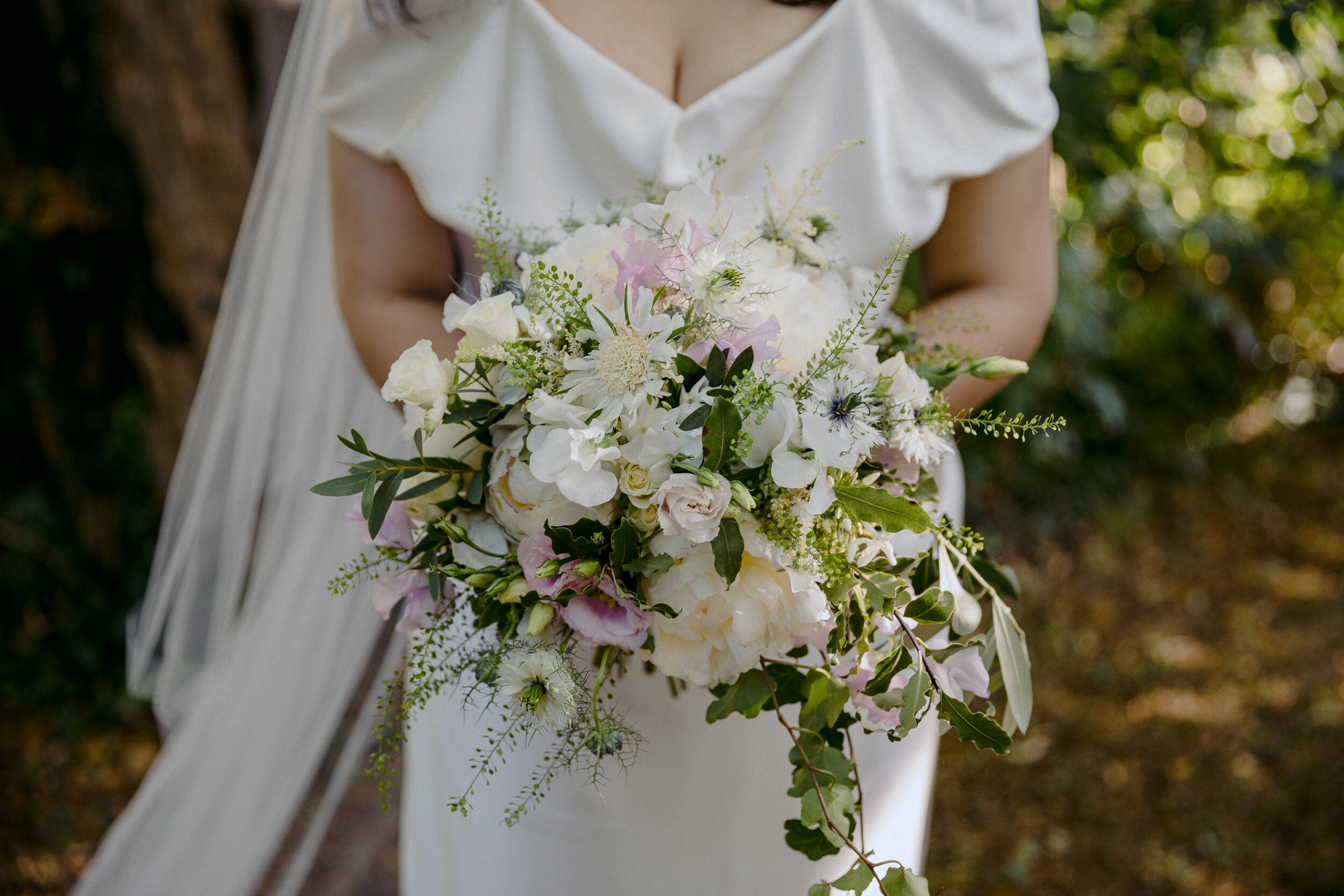The Green Wedding Series: Flowers
Sustainable wedding flowers
Flowers at weddings are surely an eco-friendly choice right? I mean it’s a natural plant that grows in the ground. How much carbon footprint can one peony really have?! Grow, pick it and transport it yourself and you can give yourself a big green pat on the back, but if that’s not feasible for you (and lets face it, who is it feasible for) then we hate to be the ones to break it to you but there are some things to consider for a more planet friendly posy.
Where do the flowers come from?
How have they been grown?
What’s going to happen to them after the day itself?
Three pretty big considerations, but not ones that should put you off if you’re keen to keep it green. When it comes to flowers the best strategy is due diligence and flexibility. Asking the right questions to florists and being able to go with the flow a little more can keep your conscience in check.
Wedding flower provenance
So where do flowers come from? All over is the obvious answer. The first thing most florists will tell you to keep your carbon footprint (and costs) down is to stay seasonal, and we totally agree. However, the weather has a huge impact on volume and availability. Which means two things - flowers may bloom earlier or later than expected, which may not line up with your wedding date, and locally grown can mean limited stock if the yield isn’t as great as expected so flowers would need to be supplemented from elsewhere. Nowadays most florists are pretty mindful of where they are sourcing their flowers and a bit of travel is hard to avoid. However, if you’re really serious about being more climate neutral then try putting your flowers fully in your florist’s hands and trust them to pick seasonal and local, rather than being constrained to colour palettes and flower preferences. Gwenda Jeffs, editor of Green Union suggests “Bring the colour you want into other styling elements and leave flowers to be the natural variant of the day. It means being more flexible with the final look but luckily UK summer flowers are generally vibrant and bold in colour and if you want to soften the look you can use foliage which you or your florist can forage. If you’re worried about volume then go for one or two statement pieces, or embrace minimalism and ask for single stem arrangements. Both look great and have a high impact on your wedding style.”
How does your garden grow?
But what about the actual growth of flowers. They do need a lot of looking after. From water to fertilisers and everything in between that’s needed to create blooms worth bragging about. Unless you’re growing them yourself you’re never going to know the whole supply chain. A more sustainable option is dried flowers, they can be sourced more easily within the UK, you can forage and dry yourself and you can hire them. Bear in mind that not all dried flowers are as eco friendly as they seem, some are dyed t0 a particular colour, so if it doesn’t look natural, it’s probably not and you might want to avoid the them.
Smart styling
Another approach is making the most of what you have so you don’t over order. It helps with the old budget as well. Utilise your flowers throughout the day. Move ceremony flowers to the reception, reuse the bouquets next to the cake, offer up the arrangements as gifts for the guests as they leave, and make sure anything that isn’t taken is composted.
You can even forgo flowers completely and opt for herbs, plants and even trees that can all be repotted and planted in your garden after your wedding. Watching them grow or knowing the herbs in your meals have come from your wedding day adds a sentimentality to your outdoor space that you can’t buy at a garden centre.
Oh and if you ignore all the above and only do one thing. Avoid oasis at all costs. Most florists won’t work with it now because its plastic but do your due diligence and check.
As with all aspects of a wedding its about balance, so if flowers are super important to you and you have a look that’s going to make or break your day then so be it, be carbon conscious elsewhere. Check out the rest of the series for other eco minded planning tips to help you do just that.



